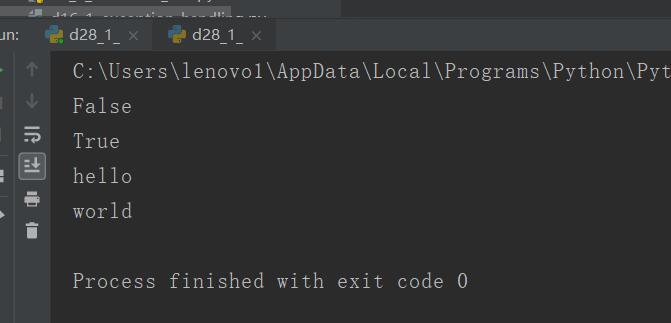
Python连载42-异步协程函数
发布于2020-01-01 11:56 阅读(302) 评论(0) 点赞(9) 收藏(4)
一、 asyncio
1.python3.4开始引入标准库之中,内置对异步io的支持
2.asyncio本身是一个消息循环
3.步骤:
(1)创建消息循环
(2)把协程导入
(3)关闭
4.举例:
import threading #引入异步io包 import asyncio #使用协程 @asyncio.coroutine def hello(): print("Hello World!(%s)"%threading.current_thread()) print("Start......(%s)"%threading.current_thread()) yield from asyncio.sleep(5) print("Done.....(%s)"%threading.current_thread()) print("Hello again!(%s)"%threading.current_thread()) #启动消息循环 loop = asyncio.get_event_loop() #定义任务 tasks = [hello(),hello()] #asyncio使用wait等待task执行完毕 loop.run_until_complete(asyncio.wait(tasks)) #关闭消息循环 loop.close()
 二、asyncio and await
二、asyncio and await
1.为了更好的表示异步io
2.python3.5引入
3.让协程代码更加简洁
4.使用上,可以简单的进行替换
(1)用async来替换@asyncio,coroutine
(2)用await来替换yield from
按照上面这个语法可以来改写前面的例子,运行结果是完全一致的
三、aiohttp
1.asyncio实现单线程的并发io,在客户端用处不大
2.在服务端可以asyncio+coroutine配合,因为http是io操作
3.asyncio实现了tcp,udp,ssl等协议
4.aiohttp是基于asyncio实现的http框架
5.例子:
import asyncio from aiohttp import web async def index(request): await asyncio.sleep(0.5) return web.Response(body=b"<h1>Index</h1>") async def hello(request): await asyncio.sleep(0.5) text = "<h1>hello,%s!</h1>"%request.match_info["name"] return web.Response(body=text.encode("utf-8")) async def init(loop): app = web.Application(loop=loop) app.router.add_route("GET","/",index) app.router.add_route("GET","/hellp/{name}",hello) srv = await loop.create_server(app.make_handler(),"127.0.0.1",8000) print("Server started at http://127.0.0.1:8000...") return srv loop = asyncio.get_event_loop() loop.run_until_complete(init(loop)) loop.run_forever()
三、current,futures
1. python3新增的库
2.类似其它语言的线程池的概念
3.利用multiprocessing实现真正的并行计算(当然要求我们的CPU是多核的)
4.核心原理:以子进程的形式,实现多个python解释器
从而令python程序,可以利用多核CPU来提升执行速度。由于子进程于主解释器相分离,所以他们的全局解释器锁也是相互独立的,每个子进程都能完整的使用一个CPU内核
5.concurrent.futures.Executor
(1)ThreadPoolExecutor
(2)ProcessPoolExecutor
(3)执行的时候需要自行选择
(4)submit(fn,args,kwargs)
fn:异步执行的函数
args,kwargs参数
import time from concurrent.futures import ThreadPoolExecutor def return_future(msg): time.sleep(3) return msg #创建一个线程池 pool = ThreadPoolExecutor(max_workers = 2)#参数是2,代表里面有两个线程干活 #往线程池里面加入两个task f1 = pool.submit(return_future,"hello") f2 = pool.submit(return_future,"world") time.sleep(1) #等待执行完毕 print(f1.done()) time.sleep(3) print(f2.done()) #结果 print(f1.result()) print(f2.result())

五、源码
d28_1_asynchronization_examples.py
https://github.com/ruigege66/Python_learning/blob/master/d28_1_asynchronization_examples.py
2.CSDN:https://blog.csdn.net/weixin_44630050(心悦君兮君不知-睿)
3.博客园:https://www.cnblogs.com/ruigege0000/
4.欢迎关注微信公众号:傅里叶变换,个人公众号,仅用于学习交流,后台回复”礼包“,获取大数据学习资料

所属网站分类: 技术文章 > 博客
作者:放羊人
链接:https://www.pythonheidong.com/blog/article/197060/d726071544696cedaf29/
来源:python黑洞网
任何形式的转载都请注明出处,如有侵权 一经发现 必将追究其法律责任
昵称:
评论内容:(最多支持255个字符)
---无人问津也好,技不如人也罢,你都要试着安静下来,去做自己该做的事,而不是让内心的烦躁、焦虑,坏掉你本来就不多的热情和定力
